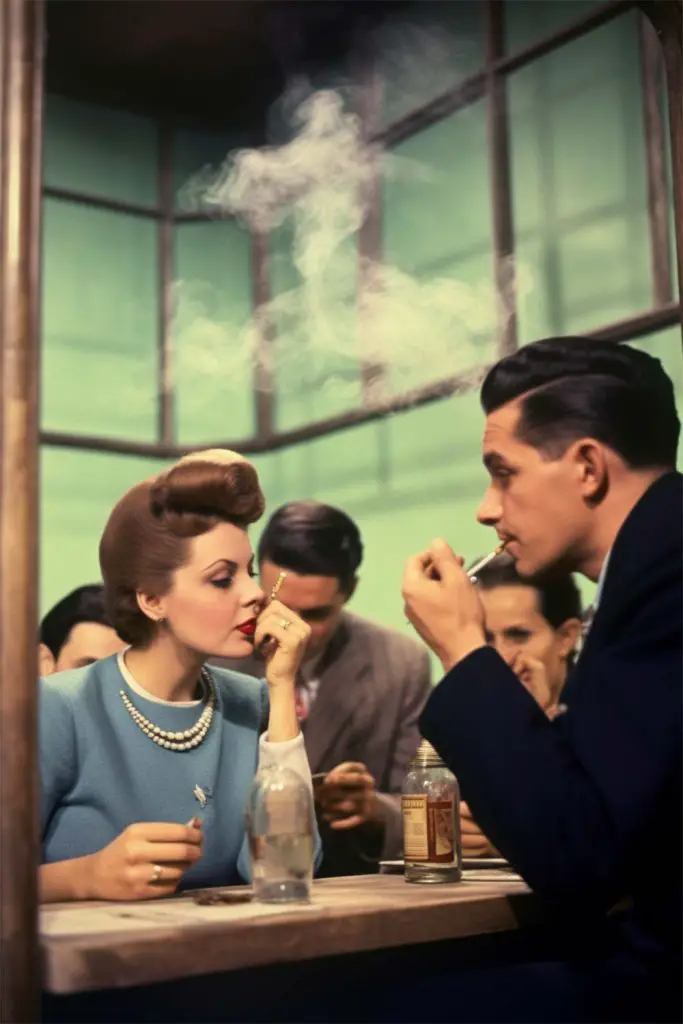12 Reasons Why Smoking Was So Popular In The 1950s

In the 1950s, smoking was an immensely popular habit that permeated various aspects of society. Cigarettes were widely seen as fashionable, sophisticated, and even glamorous. However, the reasons behind the immense popularity of smoking during this era were multifaceted and influenced by cultural, societal, and marketing factors. In this article, we will explore 12 key reasons why smoking was so popular in the 1950s.
Effective Marketing:
One of the primary reasons for smoking’s popularity in the 1950s was the highly effective marketing campaigns launched by tobacco companies. Through strategic advertising, the industry successfully portrayed smoking as a desirable and stylish habit, capturing the attention and imagination of consumers.
Glamorization in Popular Culture:
Smoking was heavily featured in movies, television shows, and advertisements during the 1950s. Iconic figures such as Humphrey Bogart and Audrey Hepburn were often seen with a cigarette, contributing to the association of smoking with sophistication, confidence, and allure.
Social Acceptance:
Smoking was socially accepted and considered a norm in various settings, including workplaces, restaurants, and even hospitals. Lighting up a cigarette was a common sight, and smoking became an integral part of social interactions and gatherings.
Relaxation and Stress Relief:
Smoking was perceived as a means of relaxation and stress relief. In a time when societal pressures were high, the act of smoking provided a momentary escape from daily stresses, allowing individuals to unwind and find solace in the ritual of lighting a cigarette.
Health Misinformation:
During the 1950s, there was a lack of awareness regarding the health risks associated with smoking. In fact, tobacco companies actively propagated misleading information, downplaying or denying the harmful effects of smoking. This misinformation contributed to the popularity of smoking as people remained unaware of the long-term consequences.
Peer Pressure and Social Influence:
Smoking was heavily influenced by peer pressure and the desire to fit in. Many individuals took up smoking to be part of a group, seeking acceptance and camaraderie. In social circles, smoking was often regarded as an essential aspect of social bonding and inclusion.
Gendered Marketing:
Tobacco companies specifically targeted women during the 1950s, associating smoking with independence, sophistication, and liberation. Advertisements portrayed smoking as a symbol of women’s empowerment, enticing them to take up the habit. This gendered marketing approach played a significant role in the popularity of smoking among women.
Post-World War II Influence:
After World War II, smoking gained momentum as soldiers returning from the war brought the habit back home. Smoking was associated with military service and was perceived as a way to connect with the wartime experiences of loved ones.
Economic Prosperity:
The post-war economic boom in the 1950s resulted in increased disposable income for many Americans. Smoking, with its relatively low cost, was affordable and accessible, making it a popular choice among consumers.
Lack of Regulations:
Unlike the stringent regulations in place today, the 1950s saw minimal restrictions on tobacco advertising and marketing. Tobacco companies had the freedom to create enticing campaigns without the need to disclose the health risks associated with smoking, further contributing to its popularity.
Cultural Influence:
Cigarette smoking became deeply ingrained in American culture, becoming synonymous with a specific lifestyle. The act of smoking was perceived as a way to emulate the glamorous Hollywood stars and cultural icons of the era, further driving its popularity.
Nicotine Addiction:
Lastly, the addictive nature of nicotine played a crucial role in the popularity of smoking during the 1950s. Nicotine, a highly addictive substance found in cigarettes, created a physical and psychological dependency, making it challenging for smokers to quit.

More interesting articles you may be interested in reading:

Potato Grow Bags: The Key to a Convenient, Pest-free, and Bountiful Harvest
Fluffy Miniature Cows Are SO CUTE and They Make GREAT PETS.
20 Ways to Deter Rabbits from Eating Your Garden
How To Get Rid Of Wasps With Just A Brown Paper Bag
How To Get Rid Of Any Burrowing Animals With This Dawn Soap Solution
Thanks for reading and be sure to share this info with your friends using the social share buttons below.
Talking about social stuff, consider liking our Facebook page to keep up to date with our articles. Check out our other articles for more mental scoops!
